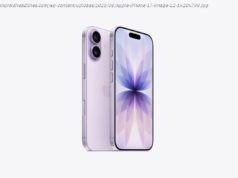Qualcomm is ready to show off more about what its Snapdragon 845 system architecture can do for the future of VR. Even as headsets based on the Snapdragon..
Qualcomm is ready to show off more about what its Snapdragon 845 system architecture can do for the future of VR.
Even as headsets based on the Snapdragon 835 reference design — like Lenovo’s positionally tracked Daydream headset — are just gearing up for their stateside release, we’re already looking to what the future of VR that isn’t tethered to something else looks like. Today, Qualcomm showed off a reference design centered around its latest mobile chipset, the Snapdragon 845.
The big highlights here of the 845 reference headset are room-scale positional tracking via a pair of onboard cameras, eye-tracking and 2K per eye resolution displays. Performance bumps (30 percent faster graphics) also mean greater power efficiency (another 30 percent increase).
It’s pretty impressive the technical leaps that mobile virtual reality has been making as specially optimized SoCs from Qualcomm have led the way to standalone devices that can deliver sophisticated experiences. Features like full room-scale tracking will allow mobile standalone systems to start working towards what users of PC-based and gaming console-based virtual reality systems.
The company will be sharing more details at a later date on its plans for VR controllers on the 845 reference design. For now, they’ve detailed that they will have support for vision-based options, assumedly similar to what Microsoft has done with its Windows Mixed Reality controllers, and controllers based on ultrasound technology which we’ll have to wait for more details on.
A surprise inclusion on the system is the addition of eye-tracking, styled for the sake of utilizing a technology that focuses high-resolution graphics on the center of your vision to account for the biology of how your eyes work. Foveated rendering will be included in the specs for the reference design and will allow a pair of cameras to track where your eyes are looking and will adjust the resolution to lighten the load on the graphics processing. This can allow for increased battery life or higher resolution displays.
This is just a reference design, so there’s nothing to buy quite yet, but in the coming months as device manufacturers get on board there will be a lot more to talk about.






